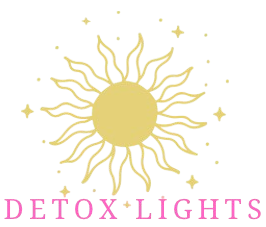Peptides vs Peptide Bioregulators
Peptides in the simplest form are strings of Amino Acids. These are NOT drugs but rather signaling molecules. <span data-mce-fragment="1">Both peptide bioregulators and regular peptides have therapeutic applications, but their mechanisms and effects vary significantly. Peptide bioregulators tend to have broader, more systemic roles in regulating cellular and metabolic processes, while regular peptides like BPC-157 are more targeted toward specific healing, regeneration, or anti-inflammatory functions
What is a peptide bioregulator?
A peptide bioregulator is a short chain of amino acids, identified by the fact that it is shorter than a protein, and so can be absorbed easily via the digestive system. Each organ or bodily function has its own unique peptide bioregulator.
What is a natural peptide bioregulator?
Natural Russian peptide bioregulators is a group of peptides of less than 50 amino acids and with a molecular mass of less than 5 kDa, free from foreign DNA or protein substance, extracted from organs and tissues of young calves by a patented method of thorough filtering. 5 kDa is very little. The molecular mass of DNA fragments and proteinaceous infectious particles, the prions, are several times bigger than that. Therefore these natural Russian peptide supplements are extremely clean products. They do not have any immunogenic or mutagenic properties.
What is a synthesized peptide bioregulator?
The analysis of natural peptides was used to detect the most active peptide from a group, which was later replicated in a lab. Synthesized peptide bioregulators supplement contains only one peptide molecule whereas natural one includes a group of molecules. Synthesized peptides have an immediate impact compared to natural peptides and have a faster, yet more short-lived effect (1.5-2 months). Such peptides are typically used to start. However, it is advised to switch to natural peptides as a follow-up course.
Peptide bioregulators and regular peptides (like BPC-157) differ in terms of their functions, mechanisms of action, and therapeutic applications. Here's a breakdown of each and how they compare:
Peptide Bioregulators
Peptide bioregulators are naturally occurring peptides or synthetic peptides designed to regulate specific biological processes in the body. They generally have a more focused role in modulating gene expression, cellular behavior, or metabolic pathways at a systemic level.
Key Characteristics:
- Regulatory Function: Bioregulators are often used to influence a very specific biological process or pathway. They can regulate gene expression, protein synthesis, or tissue regeneration.
- Gene Expression: Many bioregulator peptides act by binding to receptors on cells and influencing gene expression, leading to changes in the production of proteins and the regulation of cellular functions.
- Tissue Repair & Regeneration: Some bioregulators are involved in promoting cellular repair, growth, and regeneration, often at the level of stem cells or tissue-specific growth factors.
-
Examples:
- Thymosin Beta-4: Known for its role in tissue repair and regeneration, especially after injury.
- Epithalamin: A peptide from the pineal gland with anti-aging properties, often used to regulate circadian rhythms and promote cellular rejuvenation.
Applications:
- Anti-aging: Because they can regulate cellular repair and regeneration, peptide bioregulators are often used in anti-aging treatments.
- Regenerative Medicine: They have potential applications in healing tissues, such as cartilage or muscle regeneration.
- Immune Function: Some bioregulators (e.g., Thymosin Alpha-1) modulate the immune system.
Regular Peptides (e.g. BPC-157)
Regular peptides, like BPC-157, typically focus on more localized or specific effects rather than broad regulatory functions. BPC-157, in particular, is a synthetic peptide derived from a protein found in the human stomach that has gained attention for its potential healing and regenerative properties.
Key Characteristics:
- Healing and Regeneration: Peptides like BPC-157 are often used for their wound-healing, tissue-repair, and anti-inflammatory properties. These peptides tend to work at a localized level, influencing the repair of damaged tissues.
- Non-regulatory: Unlike peptide bioregulators, regular peptides like BPC-157 do not directly influence gene expression or regulate major metabolic pathways; instead, they typically exert their effects through signaling pathways that promote healing or reduce inflammation.
- Mechanisms of Action: For instance, BPC-157 is thought to work by promoting angiogenesis (formation of new blood vessels), collagen synthesis, and increasing tissue repair at injury sites.
Example – BPC-157:
- Origin: BPC-157 is a peptide composed of 15 amino acids derived from a naturally occurring protein in the human gastric juice.
- Mechanisms: BPC-157 is believed to have regenerative effects, helping with the healing of tissues, tendons, ligaments, muscles, and joints. It has also been studied for its potential to reduce inflammation and promote gut health.
-
Applications: BPC-157 is commonly used in contexts such as:
- Sports injuries: Accelerating recovery from muscle, tendon, and ligament injuries.
- Gut health: Protecting and healing the gastrointestinal tract.
- Wound healing: Improving the healing of wounds and cuts.
Comparison of Peptide Bioregulators vs. Regular Peptides (like BPC-157)
| Characteristic | Peptide Bioregulators | Regular Peptides (e.g., BPC-157) |
|---|---|---|
| Function | Regulate specific biological processes or pathways (e.g., gene expression, cell function). | Focus on healing, tissue repair, and anti-inflammatory effects. |
| Mechanism of Action | Often regulate gene expression, protein synthesis, and cellular behaviors. | Primarily work through localized cellular signaling to promote tissue healing and regeneration. |
| Scope of Action | Broader regulatory effects on multiple body systems. | More targeted, often localized to specific areas like tissue or gut healing. |
| Examples | Thymosin Beta-4, Epithalamin, GHK-Cu | BPC-157, TB-500, Melanotan-II |
| Applications | Anti-aging, regenerative medicine, immune modulation, gene regulation. | Wound healing, muscle repair, tendon and ligament recovery, gut health. |
| Use Cases | Primarily in regenerative medicine, stem cell modulation, immune modulation. | Commonly used for injury recovery, tissue regeneration, and reducing inflammation. |
Have questions on Peptides? Email: Support@detoxlights.com


Leave a comment